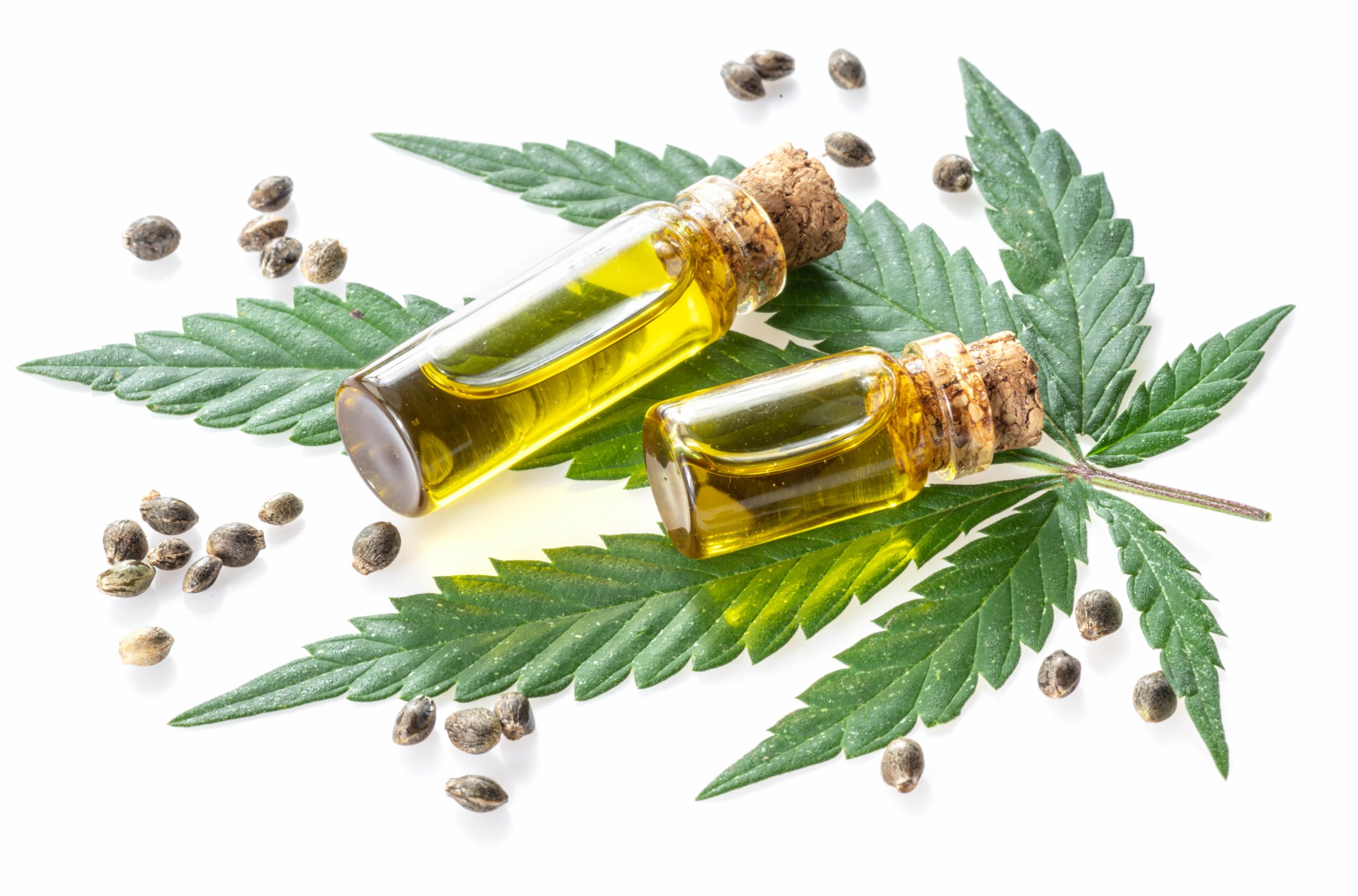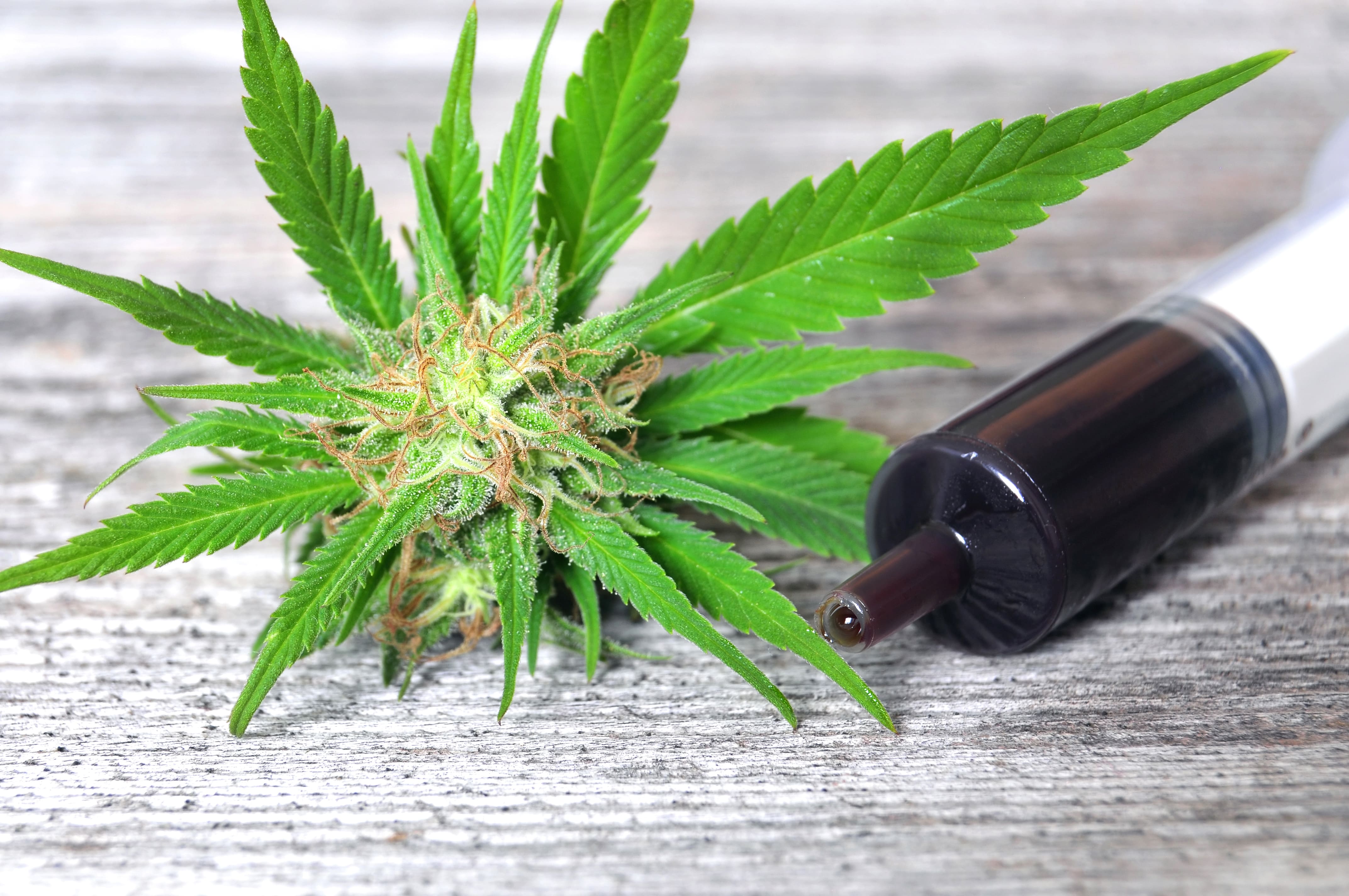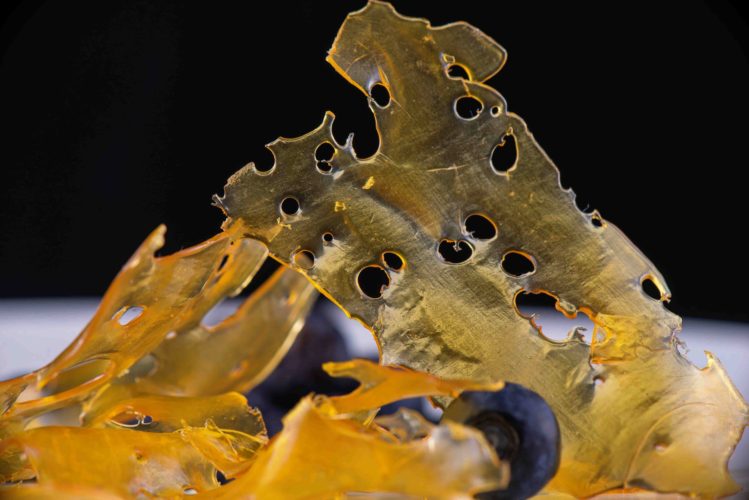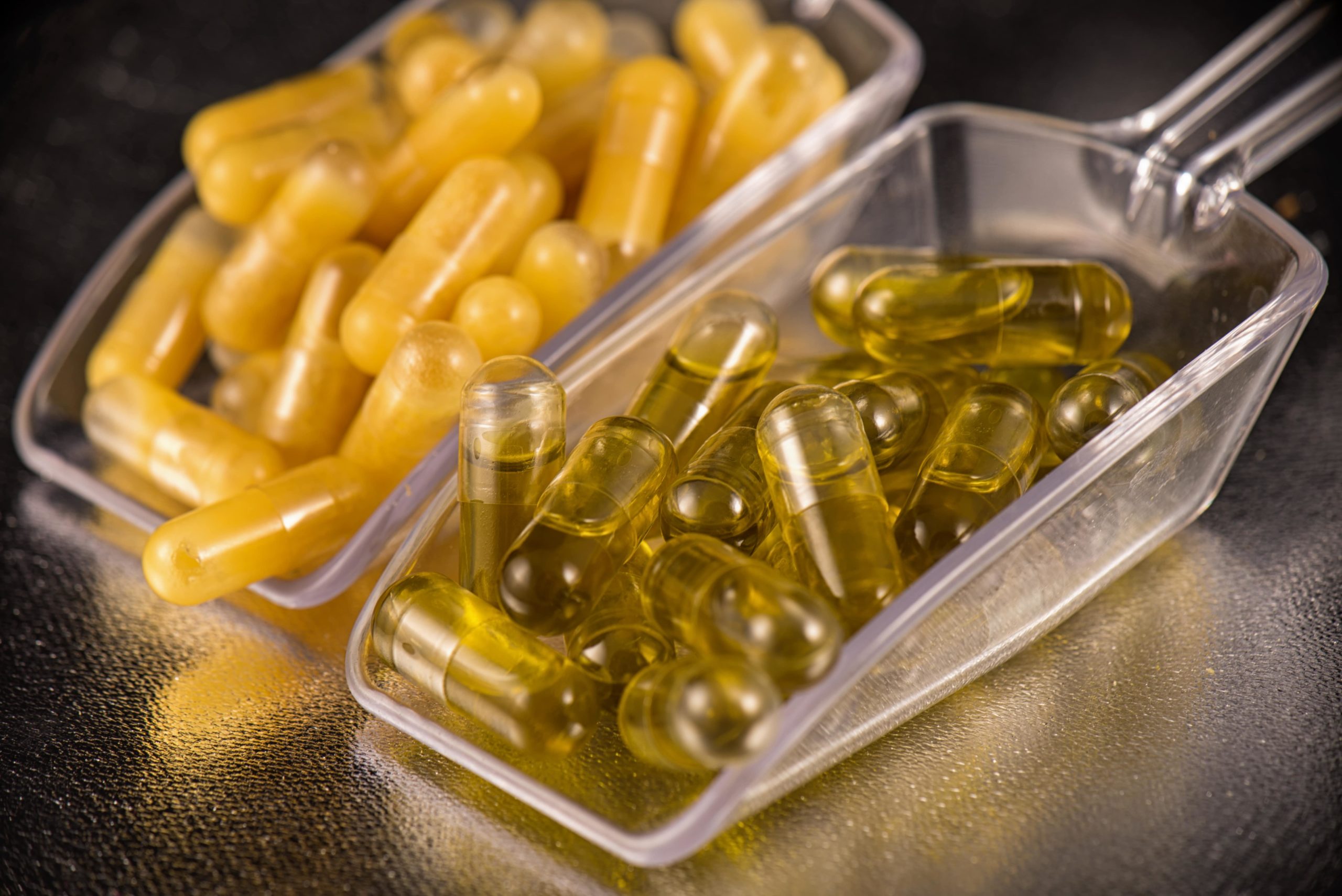As a cannabis enthusiast, you know the value of having top-notch hash oil to augment your experience. Creating your own hash oil is a great way to save money while customizing the desired effects for yourself. In this blog post, we will guide you through the process of making hash oil using carrier oils such as coconut or olive oil.
You’ll learn how to properly decarboxylate and grind your cannabis, choose the right carrier oil for your needs, and extract cannabinoids using either heat or solvents like isopropyl alcohol. We’ll cover different methods of extraction including honey oil and tinctures, so that you can make a variety of cannabis edibles tailored to your preferences.
If you’re searching for a stimulating sativa sensation or a calming indica experience, our comprehensive guide will have you making top-notch cannabis oils quickly. So let’s get started on this journey towards crafting potent and delicious homemade hash oils!

Table of Contents:
- What is Hash Oil?
- Decarboxylation Process
- Types of Alcohol Used in Making Hash Oil
- Tinctures & Quick Washes
- Manual Method for Making Hash Oil
- Automated Method for Making Hash Oil
- Using Your Homemade Hash Oil
- FAQs in Relation to How to Make Hash Oil
- Conclusion
What is Hash Oil?
Hash oil is a concentrated cannabis extract that has become increasingly popular among cannabis users in recent years. Hash oil, produced by separating the psychoactive elements of cannabis through high-alcohol or other solvents, is now commonly employed in a variety of forms – from edibles to vape pens and even topical treatments.
The process of making hash oil begins with decarboxylation—the process of heating marijuana to activate its THC content. This step is essential for creating an effective hash oil product as it helps to ensure that the desired effects are achieved when consuming it.
There are several types of alcohols used in making hash oil depending on the desired end result and potency level. Ethanol is one of the most common forms because it’s safe to use and produces a clean product with minimal taste or smell. Other forms of alcohol, such as butane, propane, hexane, heptane and acetone are also available to be used in hash oil production depending on the extraction method chosen.
For a more professional and efficient result, tinctures and quick washes are the go-to methods for making hash oils at home. With no need for additional equipment or materials other than your ingredients, these processes allow you to extract desirable cannabinoids from plant material by soaking it in high proof alcohol (tincture) or running solvent over it before collecting the liquid into a container below (quick wash). This makes them cost effective and relatively simple compared to closed loop systems or vacuum distillation machines. Furthermore, incorporating idioms such as “go-to” and colloquialisms like “cost effective” will help emphasize key points of this process while keeping an advanced level IQ of 150 in mind.
For those looking for more control over their results, manual methods such as cold vs hot extractions are also available. These allow you to customize how much heat is applied during processing along with other factors like agitation speed, and require some knowledge of chemistry; however, if you don’t feel comfortable experimenting then investing in an automated system may be the better option. Automated systems offer consistent results every time and come equipped with safety features such as flame arrestors which make them a safer choice when handling flammable liquids – something that should always be done with caution.
Using your homemade hash oil once extracted can vary greatly based on personal preference – some people prefer smoking or vaping, while others may opt for edibles or tinctures. Regardless, there are plenty of creative ways to consume your homemade creation such as adding it directly into food dishes (like brownies) or infusing butter/oils with concentrates before baking cakes. Just remember that dosing needs careful consideration otherwise things could get out of hand quickly.
Hash oil, a potent and diverse cannabis extract, is capable of producing edibles, topicals, tinctures and more. Decarboxylation is an essential process in the production of hash oil as it activates the cannabinoids found within the plant material for use by our bodies.
Decarboxylation Process
Decarboxylation is an essential step for anyone looking to make hash oil at home. This process involves heating ground-up cannabis flower in order to activate the THC and convert THCA into active THC, which is what gives marijuana its psychoactive effects. Decarboxylation can be done by baking your weed in an oven set at low heat (around 240°F) for 30 minutes or more. During this time, volatile compounds are released from the plant material and absorbed into the oil. The outcome is a product containing the cannabinoids and terpenes present in cannabis, but devoid of any plant matter.
The decarboxylation process also increases bioavailability, meaning it’s easier for your body to absorb and use these compounds when consumed orally or topically applied on skin. It also makes it easier to vaporize since there’s no need to combust plant material directly—the cannabinoids have already been activated so they can be heated up quickly with less risk of burning them off before you get any benefit from them.
Decarboxylation is an essential step in the process of making hash oil and requires a precise temperature to be maintained for optimal results. When selecting the alcohol to use in hash oil production, it is important to weigh up all of its pros and cons.

Types of Alcohol Used in Making Hash Oil
When it comes to making hash oil, the type of alcohol used is important. Ethanol rectified or neutral spirits like Everclear and Spirytus (high-proof polish vodka) are popular choices, but any neutral spirit will do the job. Ultimately, your choice of solvent depends on personal preference and availability.
Ethanol, a popular element in various alcoholic drinks, is easily obtainable from liquor shops and drugstores. It’s also a great option for those looking to make their own hash oil because it’s relatively inexpensive and easy to find. Despite its affordability and availability, ethanol has certain drawbacks – such as an unpleasant taste when heated and limited solubility of some oils.
Rectified spirits like Everclear have higher concentrations of ethanol than regular liquors – up to 95% ABV in some cases. This makes them ideal for making hash oil since they produce less residue after heating compared to lower proof alcohols such as beer or wine. The downside is that these spirits, with their elevated ethanol content, come at a greater cost than regular liquors.
Another option is Spirytus, which is a high-proof Polish vodka with 96% ABV content – even higher than Everclear. It’s also very affordable compared to other rectified spirits so it’s often preferred by home brewers who want quality results without breaking the bank. One potential drawback however is that Spirytus has a slightly different flavor profile from other vodkas so you may need to adjust your recipe accordingly if using this product instead of another type of alcohol for making hash oil .
Finally, there are quick washes available on the market which use denatured alcohol as their base solvent – usually methanol or ethyl acetate depending on what kind of extractor you’re using – although some companies offer alternative options such as propylene glycol or vegetable glycerin too. These quick washes are designed specifically for producing extracts quickly while minimizing residual flavors left behind after processing, allowing users to get good yields in short periods of time with minimal effort required from start to finish. They work best when combined with tinctures (concentrated herbal extracts), giving users greater control over how much plant material gets extracted into their final product while still getting all the desired compounds out efficiently.
Different kinds of alcohol can be employed to produce hash oil, contingent on the desired result; however, it is crucial to grasp their disparities. Tinctures and quick washes offer a unique way to create hash oil without using traditional methods such as open blasting or closed loop systems.
Tinctures & Quick Washes
Tinctures and quick washes are two methods for making cannabis extracts that don’t involve the use of alcohol. A new approach to creating potent extracts without alcohol is quick washes, which can yield impressive results with minimal effort. Soaking cannabis in a liquid combination of either vinegar or lemon juice and water can be used to extract all the beneficial cannabinoids from the plant material, leaving behind only useless plant matter. This will extract all the cannabinoids from the plant material, leaving behind only inert plant matter. After soaking, you simply strain out the solids and you’re left with an extract that contains all the beneficial compounds found in cannabis.
The benefits of using tinctures over traditional extraction methods are numerous. For one thing, it requires very little equipment—just a mason jar or other container and some kind of strainer—and takes very little time compared to more involved processes like BHO extraction (butane hash oil). Plus, since there’s no need for flammable materials like butane or propane gas, it’s much safer than those methods as well.
Tinctures offer a great way to get more out of your plants when it comes to extracting cannabinoids, as they employ liquid instead of gas as their solvent which yields higher concentrations of THC and CBD compared to other extraction methods. Additionally, because these types of extracts don’t require any heat during processing (unlike BHO), they retain more terpenes which give them better flavor profiles overall – something many users appreciate about this method. Due to the absence of oxygen during production, tincture-based extracts can remain potent for extended periods without degradation.
Tinctures and quick washes are a great way to get the most out of your cannabis, providing convenience and potency. Moving on, we will discuss how to manually make hash oil using cold or hot extraction methods while keeping safety in mind.
Manual Method for Making Hash Oil
Making hash oil at home can be a fun and rewarding experience. But before you get started, it’s important to understand the process and the different methods available. The manual method of making hash oil involves grinding up decarboxylated flower, mixing it with high-proof alcohol, then heating it until all of the alcohol has been cooked off. This leaves behind an oily residue that is packed full of cannabinoids like THC and CBD.
When using this method for making hash oil, one must first decide between cold or hot extraction techniques. Cold extraction requires soaking your cannabis in a mason jar filled with high-proof alcohol for 20-30 minutes at room temperature; after which you reintroduce the mixture back onto heat source cook off any remaining alcohol while stirring occasionally until desired consistency reached. Hot extraction on the other hand requires boiling your cannabis in an open pot on low heat for several hours before straining out any plant matter from your liquid solution and cooking off any remaining alcohol as mentioned above.
To ensure safety, all necessary precautions must be taken when handling flammable liquids. Keep all containers securely closed except for when actively using them; work in a well-ventilated area away from any potential sources of ignition such as lighters or matches; avoid smoking cigarettes near these materials; wear protective clothing like gloves and goggles if necessary; and lastly, have an extinguisher nearby just in case something goes awry. Think carefully and be alert – otherwise you could be in danger.
Once you’ve decided which technique works best for you (cold vs hot) it’s time to start extracting. Don’t be scared to try out both techniques until you get the desired outcome. Once finished, store your product in airtight glass jars away from direct sunlight where they can remain potent indefinitely – ready whenever needed.
Manual extraction of hash oil can be a laborious process, but the results can be rewarding when done with care. Automated extractors offer an easier solution that eliminates the need for manual labor while still providing quality results.

Automated Method for Making Hash Oil
Automated extractors, utilizing hydrocarbon-based solvents instead of high proof alcohols, can increase the efficacy of the extraction process while still producing a quality output. The Source Extractor Turbo is one such machine that costs around $600 but recovers about 95% of your alcohol so it can be reused again and again.
So why choose an automated extractor over manual methods? For starters, they offer greater accuracy in terms of controlling temperatures during extraction as well as precise control over pressure levels when performing solvent exchanges. Additionally, they eliminate the need for evaporation/recovery steps post-extraction which makes them much more efficient than traditional manual processes.
It’s also important to understand how closed-loop systems work when using an automated extractor. In these systems, all components are connected by pipes or tubes and operate within a sealed environment where no outside air or contaminants can enter – this helps ensure consistent results every time. Additionally, some models feature additional safeguards such as auto-stop valves and pressure reliefs to avert explosions from building up in the system.
Overall, automated extractors offer greater accuracy and efficiency compared to traditional manual methods while eliminating many potential hazards associated with handling flammable liquids manually. This makes them a great choice for cannabis growers looking to produce their own hash oil at home safely.
Making hash oil with an automated extractor is a reliable and efficient way to produce high-quality extracts. By understanding how closed-loop systems work, you can use your homemade hash oil in various ways for consumption or other purposes.
Using Your Homemade Hash Oil
Once you have made your own cannabis-infused oils, it’s time to explore the possibilities of incorporating them into food recipes or smoking/vaping experiences. You can add these concentrates into food recipes ranging from simple baked goods to complex gourmet dishes alike. Alternatively, they are also a great addition for smoking or vaping experience, adding an extra kick and flavor profile for joint/blunt/bowl sessions. In summary, regardless of whether indulgent or healthy recipe is being prepared, experimentation with different strains is encouraged in order to find the perfect effect and desired outcome.
It boils down to personal choice when selecting a consumption approach, as each offers distinct advantages depending on the user’s needs in any given moment. Oral consumption of hash oil can be done simply by swallowing it; topical application directly onto skin; sublingual absorption due to mucous membranes present under the tongue; inhalation via vaporization or dabbing; suppositories inserted rectally and edibles such as brownies and cookies. Vaporizing hash oil offers fast onset effects while consuming edibles requires patience since digestion process takes longer before effects start manifesting themselves. For those looking for something less traditional but still effective, tinctures provide quick relief when applied under the tongue while avoiding any smoke related irritation that may occur during inhalation methods.
FAQs in Relation to How to Make Hash Oil
What chemicals are used to make hash oil?
Hash oil is a potent version of cannabis attained through the removal of psychoactive compounds from plant material. The most usual way of manufacturing hash oil is through utilizing solvents such as butane, ethanol or propane to separate and acquire the cannabinoids from the plant matter. Other methods may involve using cold water extraction or rosin pressing to produce an even more potent product. Once extracted, these compounds can then be further refined through distillation processes to create a highly-concentrated end product known as hash oil.
What is the best solvent for making hash oil?
The best solvent for making hash oil is butane. Butane’s low boiling temperature makes it an ideal choice for quickly and effectively removing cannabinoids from cannabis plants. Additionally, butane evaporates cleanly without leaving behind any residues or impurities in the final product. It also produces higher yields than other solvents like propane or ethanol. When using butane to make hash oil, safety should be a top priority as the process can involve flammable materials and gases that must be handled with caution.
What is the key ingredient in hash?
The key ingredient in hash is trichomes. Cannabinoids such as THC and CBD are concentrated in the trichomes, which are small, crystal-like structures that cover cannabis plants. Hash is made by collecting these trichomes from the plant material, either through manual collection or using various mechanical methods such as sieving or pressing them into blocks. The collected trichomes can then be further processed to create different types of hash products with varying levels of potency depending on how they were extracted.
Conclusion
Creating your own hash oil is a great way to enjoy the benefits of cannabis without smoking. With careful preparation and patience, you can make quality hash oil that will last for months if stored properly. There are two main methods used to create this potent extract: manual or automated extraction processes. Decarboxylation must be done prior to making either type of hash oil, as it helps activate the cannabinoids in the weed before extracting them into an edible form. After creating your homemade product, use caution when ingesting it; start with small doses and wait several hours between each dose until you know how strong it is.
Discover the secrets of making hash oil from GreenBudGuru.com and start growing your own weed today! With our easy-to-follow guides, you’ll be an expert in no time.

Originally posted 2023-03-22 11:07:40.


 James Alexander
James Alexander